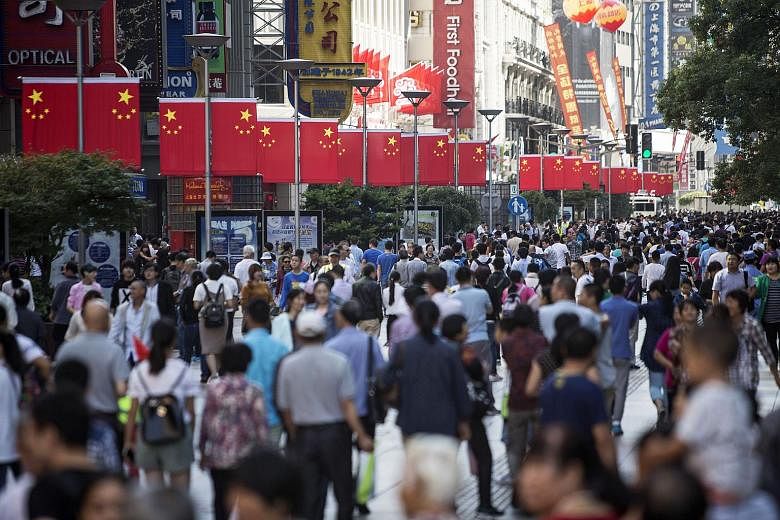BEIJING (REUTERS, BLOOMBERG) - China's economic growth eased to 6.9 per cent in the third quarter from a year earlier, beating expectations but still the slowest since the global financial crisis, putting pressure on policymakers to roll out more support measures as fears of a sharper slowdown spook investors.
Analysts polled by Reuters had predicted gross domestic product (GDP) for the world's second-largest economy would come in at 6.8 per cent, compared with 7 per cent in the prior quarter.
Quarter-on-quarter growth was 1.8 per cent, the National Bureau of Statistics said at a news conference on Monday (Oct 19).
The market had expected GDP growth to come in at 1.7 per cent on a quarterly basis, compared to a revised reading of 1.8 per cent the prior quarter.
Fixed-asset investment growth eased to 10.3 per cent year-on-year in the Jan-September period, missing market expectations.
Analysts polled by Reuters predicted investment growth would come in at 10.8 per cent, compared with 10.9 percent posted the prior month.
Industrial output growth also cooled more than expected to 5.7 per cent, disappointing analysts who expected it to rise 6 per cent on an annual basis after a rise of 6.1 per cent the prior month.
Retail sales quickened to 10.9 per cent.
Analysts forecast they would rise 10.8 per cent on an annual basis after a rise of 10.8 per cent the prior month.
Challenges have been mounting for China's manufacturers as exports declined last quarter and a slide in producer prices extended to a record 43 months. That's helping keep a lid on prices around the world, as China's factory and export prices tend to move in the same direction.
China affects the world more than ever, with Federal Reserve Chair Janet Yellen last month citing concern about the world's second-largest economy among reasons for holding off from raising interest rates. China accounted for 13.3 per cent of global GDP last year, from less than 5 per cent a decade earlier, according to World Bank data.
Domestically, property investment and excess industrial capacity have weighed on China's traditional growth drivers, leaving the economy on track for its slowest full-year expansion in 25 years.
While avoiding the kind of all-out stimulus deployed after the global financial crisis, policy makers have deployed a variety of tools to cushion the slowdown. The People's Bank of China has cut interest rates to record lows and reduced banks' reserve requirement ratios, the finance ministry has relaxed rules for local authorities to borrow, and the top economic planning body has stepped up project approvals.
In the near term, positive signals appeared in lending data released by the central bank last week as the broadest measure of new credit exceeded estimates in September. Further out a deceleration looms, with China's leaders poised to lower their growth target for the next five years, according to economists surveyed by Bloomberg News.

